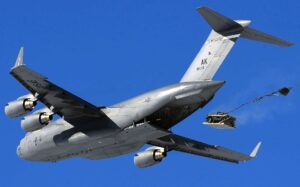Driving on the highway: what you need to know
Written by Olivier Duquesne on 06/29/2023





The highway is the axis par excellence for motorized vehicles. By car, it allows you to cover long distances quickly and safely. Provided you respect certain rules.
Driving on the highway is an exercise that requires good concentration to move quickly and safely. Here are the essential rules for driving well on this type of road:
General rules
- Wear appropriate clothing (flat shoes, no big jacket, etc.).
- Respect the speed limit ( in Germany , on sections without speed limits, do not exceed your own limits or those of the car).
- Respect the safety distance (at least 2 seconds after the preceding vehicle).
- Keep both hands on the steering wheel, looking as far ahead as possible. No phone, sandwich or bottle in hand while driving.
- Wear glasses suitable for distance vision, night vision or to protect yourself from the sun.
- Remember to regularly glance at your mirrors to know the traffic around you.
- Master the operation of your cruise control and adapt the desired warning or action distance with active cruise control.
- Do not merge into traffic at too low (or too high) a speed from the access lane. You do not have priority when entering the highway, except in Denmark .
- Be particularly vigilant when approaching the entrance and exit ramps .
- Follow the GPS and signage instructions at the interchanges carefully.
- Anticipate your exit so as not to fall back at the last moment.
- Let off the accelerator a little before exiting the highway and brake once you reach the deceleration lane.
- Do not crash other vehicles, especially trucks. Also, do not make sudden, unjustified maneuvers in front of them.
- Be careful of motorcyclists, especially in queued traffic.
- Be very attentive around a construction site (and respect the limitations, even if there are no workers, because there may be a slowdown or material falling on the track).
- Remember to take a real break every 2 hours.

Maneuvers, lines and obstacles
- Always start by indicating your intention to change lanes with the indicator (at least 3 flashes) before looking at the rear-view mirror and then carrying out the maneuver. Don’t forget the blind spot.
- When overtaking, accelerate a little when changing lanes.
- Do not wait until you are right behind a slower vehicle to pass it (this will force you to slow down or brake and then move on again, which can disrupt the progress of other vehicles).
- Do not turn to the right if several overtakes can occur in succession without obstructing traffic. Once the overtaking(s) are completed, return to the right lane (obligatory).
- Don’t stay on the center or left strip for no reason (unless you want to make everyone hate you).
- Do not slalom between lanes, including in traffic jams.
- If the vehicle you are overtaking accelerates, let it do so and then pull back.
- Check your mirror(s) carefully before changing lanes (to overtake, to take an exit or to pull back).
- When approaching a toll gate , slow down and choose a lane based on your payment method. Once payment has been made and the barrier has been opened, accelerate sharply towards the lane concentration point, taking care not to cut off the path of another vehicle.
- When the road narrows, apply the zipper rule .

Incidents
- In the event of emergency braking, you really need to brake as hard as possible to slow down the speed (and reduce the risk of injury in the event of a collision) before adapting braking according to the circumstances.
- Do not slam on the brakes suddenly without reason.
- If you slow down, signal it to other users using the hazard lights.
- After slowing down, a construction site or an accident, accelerate sharply to return to cruising speed.
- In traffic jams, free up a traffic lane between the lanes for emergency services .
- In the presence of a priority vehicle , move aside to let it pass by indicating your intention with your indicators.
- In the event of a congested exit lane or interchange, do not stick to the vehicle in front of you. If you’re last in line in a sticky situation, turn on your hazard lights and keep your eyes on the mirrors to anticipate a rear-end collision. Always be prepared to find an escape route if a vehicle behind you does not appear to slow down sufficiently.
- Always look towards where your car needs to go, not the obstacle.
- Never stop on the hard shoulder , except in an emergency.
- Do not stay in a vehicle in the emergency lane . Get out, put on your safety vest, get your passengers out, put down your triangle (unless this puts you in danger) and take shelter behind the safety rail, the low wall or on an embankment (caution: do not jump over the barrier of a bridge without checking the presence of a secure parapet).
- If a vehicle is on the emergency lane, slow down or move into the lane on your left to maintain a safe space (without endangering other users). This maneuver and slowing down are obligatory in France .
- In a motorway tunnel, reach the emergency exit as quickly as possible with all your passengers in the event of a serious incident, leaving your key in the vehicle (for emergency services).
- In the event of a technical problem that is not immobilizing and poses no danger to other users, try to get to safety as soon as possible at a rest area or take the first exit to find safe parking.
- In the event of a stranding breakdown, call a breakdown service or 112 (or the emergency terminal in countries where this still exists), do not intervene yourself on the motorway or the emergency lane .
- In the event of an accident that you witness, only intervene if your presence is necessary and obligatory (to avoid prosecution for failure to assist a person in danger). Always remain vigilant by monitoring motorway traffic, notify emergency services and think about your safety, as well as that of your passengers and other witnesses.
- If you are in an accident , try to stay calm. Call 112. If the vehicle can be moved to safety, do so. Help other victims if necessary before help arrives – without putting yourself in unnecessary danger. Otherwise, take shelter while waiting for emergency and repair services to intervene.
- When an intervention is underway following an accident, slow down, do not watch the accident (and do not film). Once you have passed the danger zone, reaccelerate sharply.
- If a red X is lit above a lane: do not take it.
- If a diamond appears on the variable display: it is a lane reserved for carpooling.
- Follow the instructions for the variable display.
- Never hesitate to warn drivers in the other direction of traffic by flashing their headlights in the event of a serious problem affecting them.

Special and dangerous conditions
- At night, use high beams correctly to see the road without dazzling other drivers. Recent cars have an automatic high beam changing system.
- In the rain, adapt your speed, especially if there is water standing on the road.
- If there is a puddle, try to slow down before entering it to avoid hydroplaning. Once in a puddle or rut, don’t brake and try to stay on course. With a manual transmission: press the clutch pedal to deactivate the differential. With an automatic transmission, try placing the selector in N when going through water.
- In case of flooded road, try to keep the same speed, not too fast, to push the water and find a dry place or higher up.
- Do not use a tunnel that is flooded or clearly about to be flooded.
- In case of fog or smoke: brake, turn on the fog lights and adjust your speed.
- On the snow: adapt your speed according to the tire height and the traffic in the surrounding area.
- On ice: at idle, even with winter tires.
- Do not panic if a vehicle is driving too close to your rear. Avoid provoking it and let it pass as soon as possible.
- Do not panic if a vehicle arrives in the wrong direction (ghost driver) : slow down, drive as far to the right as possible, try to warn the user of their mistake. Then notify the traffic police (112).
- If you take a highway in the wrong direction: do not continue or turn around (it is very dangerous)! Stop on the hard shoulder or in the central reservation, activate your hazard lights and call the traffic police (112).





